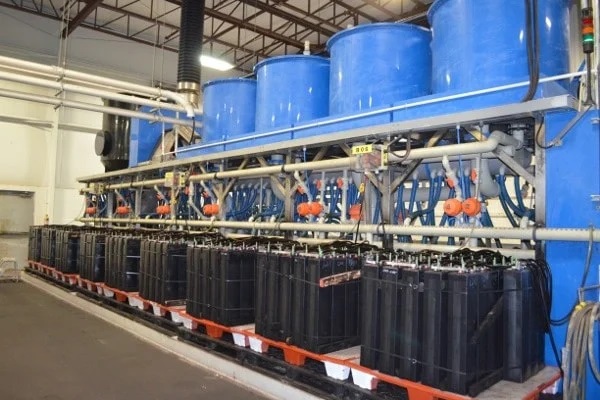The production of lead-acid batteries involves several key processes. Lead-acid batteries are commonly used in automotive, industrial, and stationary applications.
- Grid Manufacturing:
- The positive and negative grids of the battery are typically made from a lead-calcium alloy. The grids provide structural support for the active material and serve as current collectors.
- The lead-calcium alloy is cast into grid shapes and then undergoes various forming processes to achieve the desired structure.
- Paste Preparation:
- Lead oxide is a key component of the paste used in the battery’s positive and negative plates. Lead oxide is mixed with dilute sulfuric acid to form a paste.
- This paste is applied to the grids. The positive plate usually contains lead dioxide (PbO2), while the negative plate contains sponge lead (Pb).
- Plate Pasting:
- The paste-coated grids are stacked together to form the positive and negative plates of the battery.
- Excess paste is removed, and the plates are cured to allow the paste to harden.
- Assembly:
- The positive and negative plates are assembled into the battery cell, with separators (usually made of microporous material) placed between them to prevent short circuits.
- Multiple cells are connected in series to achieve the desired voltage.
- Filling and Formation:
- The assembled cells are filled with a diluted sulfuric acid electrolyte, initiating the formation process.
- The formation process involves applying an electrical charge to the battery to convert the lead oxide on the positive plate and the sponge lead on the negative plate into their active forms (lead dioxide and sponge lead, respectively).
- Sealing:
- After formation, the battery is sealed to prevent leakage and secure the electrolyte inside.
- Charging and Testing:
- The fully assembled and sealed batteries undergo a final charging process and are tested for performance and quality.
- Formation Cycling:
- The batteries may go through additional formation cycling to optimize their performance.
- Finishing and Packaging:
- The final step involves finishing the battery by adding labels, terminal connectors, and other components.
- The batteries are then packaged and prepared for distribution.
It’s important to note that variations in these processes may exist depending on the specific type and application of lead-acid batteries. Additionally, advancements in technology may lead to changes or improvements in the manufacturing processes over time.


